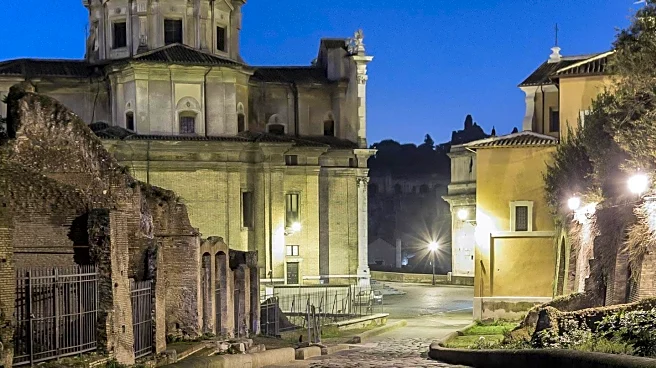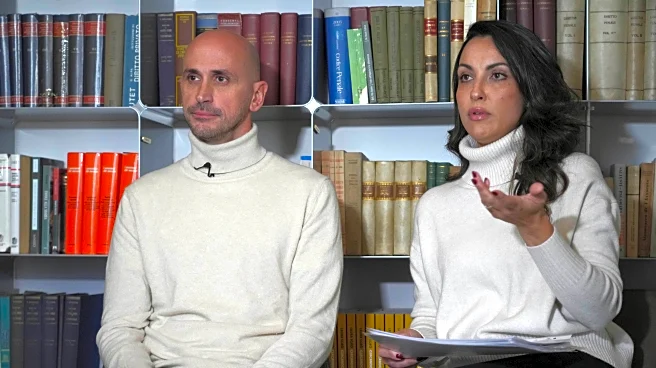What's Happening?
A 15th-century Bible, renowned for its exquisite miniature paintings and considered one of the most spectacular examples of Renaissance illuminated manuscripts, has been unveiled in Rome. The Borso D’Este
Bible, commissioned by Duke Borso D’Este and created between 1455 and 1461, is now on display in the Italian Senate as part of the Vatican’s Holy Year celebrations. Known for its opulent use of gold and Afghan lapis lazuli, the Bible is usually kept in a safe at a library in Modena and is rarely seen by the public. The Italian Culture Ministry regards it as a high expression of miniature art, combining sacred value, historical relevance, and refined aesthetics. The Bible will remain on display until January 16, allowing visitors to view it digitally via touch screen displays featuring ultra-high-resolution images.
Why It's Important?
The public display of the Borso D’Este Bible is significant as it offers a rare opportunity for the public to engage with a historically and artistically important artifact. The Bible's unveiling is part of the Vatican's Jubilee celebrations, aiming to inspire visitors to reflect on the beauty and spiritual significance of religious texts. This event highlights the intersection of art, history, and religion, showcasing the cultural heritage of Italy and the Renaissance period. The Bible's display also underscores the importance of preserving and sharing historical artifacts, allowing for broader public access and appreciation of cultural treasures.
What's Next?
The Bible will remain on display in the Italian Senate until January 16, providing ample time for visitors to experience its artistic and historical significance. The exhibition is expected to attract scholars, art enthusiasts, and the general public, fostering a deeper appreciation for Renaissance art and religious manuscripts. The event may also prompt discussions on the preservation and accessibility of historical artifacts, encouraging institutions to consider similar public displays of rare items. Additionally, the digital access provided through touch screen displays may set a precedent for future exhibitions, enhancing visitor engagement and educational opportunities.
Beyond the Headlines
The exhibition of the Borso D’Este Bible not only highlights the artistic and historical value of the manuscript but also raises questions about the role of art in religious and cultural identity. The Bible's opulence reflects the Duke's desire to celebrate both the sacred text and his own prominence, illustrating the interplay between power, faith, and art during the Renaissance. This event may lead to further exploration of how illuminated manuscripts have influenced religious practices and cultural perceptions over time, offering insights into the societal values and artistic achievements of the period.












